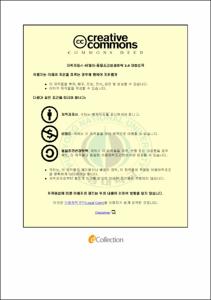해변 플라스틱 쓰레기의 크기 그룹간 관계를 이용한 미세 플라스틱 오염 평가
- Alternative Title
- Relationship among size groups of plastic beach debris as a tool to assess microplastic pollution in Korea
- Abstract
- Micro-plastic marine debris is an emerging marine environmental issue. These small particles of plastic debris can be widely distributed and be more likely ingested by marine life with decreasing size. Information about the abundance and spatiotemporal distribution of micro-plastics is essential for the development of management strategy. However, relevant data have not been well documented because micro-plastic surveys require much more time, labor, and technical support in comparison with surveys of larger debris. The purpose of this study is to determine relationships among the abundances of macro-, meso-, and micro-plastic debris size classes to provide insights for the development of efficient micro-plastic survey methods.
Plastic debris on six beaches near the Nakdong River Estuary and east coasts of Geoje island, Korea, was sampled in May and September 2012. Collected plastic debris was classified into four types, of intact plastic, Styrofoam, fragment, other foamed plastics and three size groups, of micro (1∼<5 mm), meso (5∼< 25 mm), and macro (≥25 mm). Abundance and weight were measured for each type and size group of plastic debris. Relationships between the abundances of size groups were statistically examined using Spearman's rank correlation coefficient.
Average abundances of macro-, meso-, and micro-plastics on six beaches in the first survey in May, 2012, were 1, 239, and 8,205 particles/㎡, respectively. Average weights were 11 g/㎡ for macro-, 16 g/㎡ for meso-, and 7 g/㎡ for micro-plastics. Average abundance of macro-plastics observed in the second survey in September, 2012, was 1 particles/㎡, that of meso-plastics 237 particles/㎡, and that of micro-plastics 27,606 particles/㎡. Average weights of macro-, meso-, and micro-plastics in the second survey were 15, 26, 32 g/㎡, respectively. Styrofoam was the most abundant plastic debris both in micro- and meso-size groups, while intact plastics were the most common item in macro-plastic debris. Composition of plastic debris was significantly different between the first and second surveys, while their abundance and weight were not.
The most strong correlation between size groups was found in the abundances of meso- and micro-plastics. Correlation between the abundances of macro- and meso-plastics was higher than that between macro- and micro-plastics. This study demonstrated that considering the difficulties involved in surveys of very small plastic debris, meso-size plastic debris could be used for rapidly assessing micro-plastic pollution on beaches in Korea.
- Issued Date
- 2013
- Awarded Date
- 2013. 8
- Type
- Dissertation
- Publisher
- 부경대학교
- Alternative Author(s)
- Lee, Jongmyoung
- Affiliation
- 대학원
- Department
- 대학원 생태공학과
- Advisor
- 강대석
- Table Of Contents
- 제1장 서론 1
제2장 문헌 연구 5
2.1. 미세플라스틱 해양쓰레기의 생물 영향 5
2.1.1. 해양쓰레기의 영향 5
2.1.2. 야생동물의 미세 플라스틱 섭취 6
2.1.3. 미세 플라스틱과 잔류성 유기오염 물질 7
2.2. 미세플라스틱 해양쓰레기 조사 9
2.2.1. 한국의 미세플라스틱 해양쓰레기 조사 9
2.2.2. 외국의 미세 플라스틱 해양쓰레기 조사 사례 10
2.3. 해안 미세플라스틱의 크기 그룹별 조사 12
2.4. 미세 플라스틱 조사 방법 표준화 14
제3장 연구 방법 16
3.1. 조사 지역 및 시기 16
3.2. 플라스틱 해양쓰레기 채집 및 자료 분석 24
3.2.1. 플라스틱 해양쓰레기의 크기 그룹 구분 24
3.2.2. 플라스틱 해양쓰레기 채집 24
3.2.3. 통계 분석 31
제4장 결과 32
4.1. 플라스틱 해양쓰레기의 양과 조성 32
4.1.1. 대형 플라스틱 해양쓰레기 32
4.1.2. 중형 플라스틱 해양쓰레기 43
4.1.3. 미세 플라스틱 해양쓰레기 53
4.1.4. 시기별 결과 비교 63
4.2 크기 그룹간 상관분석 72
4.2.1. 조사구 단위로 본 상관분석 72
4.2.2. 방형구 단위로 본 상관분석 82
4.3. 크기 그룹간 회귀분석 85
4.3.1. 조사구 단위로 본 회귀분석 85
4.3.2. 방형구 단위로 본 회귀분석 93
제5장 토의 97
5.1. 해변 플라스틱 쓰레기의 시공간 분포 97
5.1.1. 대형 플라스틱 해양쓰레기 97
5.1.2. 중형 플라스틱 해양쓰레기 100
5.1.3. 미세 플라스틱 해양쓰레기 102
5.1.4. 조사 시기에 따른 플라스틱 해양쓰레기 조성과 양의 차이 106
5.2. 플라스틱 해양쓰레기 양의 크기 그룹 간 상관관계 113
5.2.1. 대형 플라스틱과 중형 플라스틱 해양쓰레기의 관계 114
5.2.2. 대형 플라스틱과 미세 플라스틱 해양쓰레기의 관계 114
5.2.3. 중형 플라스틱과 미세 플라스틱 해양쓰레기의 관계 115
5.2.4. 회귀분석을 통한 플라스틱 해양쓰레기의 파편화 해석 116
5.3. 효율적인 미세 플라스틱 해양쓰레기 조사 방법 제안 118
5.3.1. 중형 플라스틱 해양쓰레기 조사를 통한 미세 플라스틱 오염 신속 평가 118
5.3.2. 해변 미세플라스틱 조사의 대표성 있는 조사구 설정 120
5.3.3. 미세 플라스틱의 종류 구분 124
5.4. 미세스티로폼 해양쓰레기의 오염수준 및 관리 시사점 128
5.4.1. 외국의 스티로폼 해양쓰레기 오염 수준과 비교 128
5.4.2. 스티로폼 부자 해양쓰레기의 발생원과 발생량 131
5.4.3. 현행 정책의 한계와 조사 연구의 필요성 132
제6장 결론 137
6.1. 요약 137
6.2. 연구의 한계와 과제 141
Abstract 142
참고문헌 144
Appendix 156
감사의 글 188
- Degree
- Doctor
- Files in This Item:
-
-
Download
 해변 플라스틱 쓰레기의 크기 그룹간 관계를 이용한 미세 플라스틱 오염 평가.pdf
기타 데이터 / 7.12 MB / Adobe PDF
해변 플라스틱 쓰레기의 크기 그룹간 관계를 이용한 미세 플라스틱 오염 평가.pdf
기타 데이터 / 7.12 MB / Adobe PDF
-
Items in Repository are protected by copyright, with all rights reserved, unless otherwise indicated.